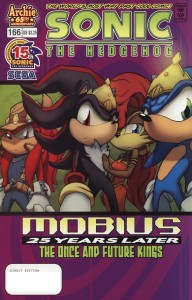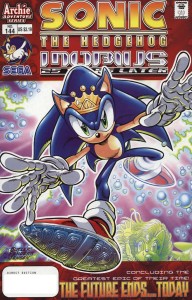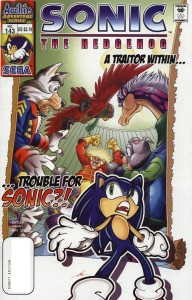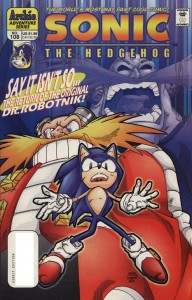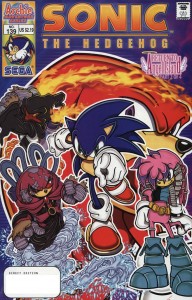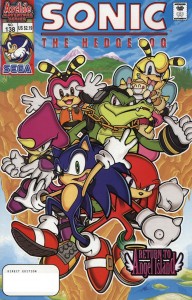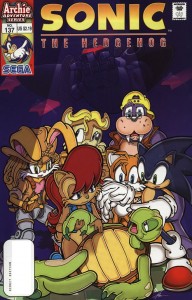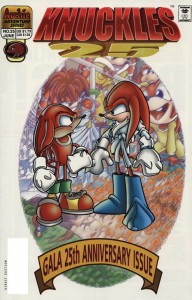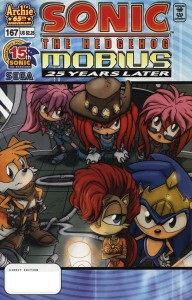 When Ian Flynn took over Sonic the Hedgehog as main writer back in 2006, his first task was to wrap up everything the comic had been doing for years. Strung out plotlines with little resolution had become the norm, and had definitely run its course. Sonic #160 through Sonic #174‘s primary purpose was to bring everything back together and reign it in so #175 could be an easy jumping off point, not just for the reader but for Ian to write his own stories involving the sprawling cast of the comic. Part of that spring cleaning was the initial resolution to Mobius: 25 Years Later, even if it had been two years since the storyline had been an ongoing feature in the book.
When Ian Flynn took over Sonic the Hedgehog as main writer back in 2006, his first task was to wrap up everything the comic had been doing for years. Strung out plotlines with little resolution had become the norm, and had definitely run its course. Sonic #160 through Sonic #174‘s primary purpose was to bring everything back together and reign it in so #175 could be an easy jumping off point, not just for the reader but for Ian to write his own stories involving the sprawling cast of the comic. Part of that spring cleaning was the initial resolution to Mobius: 25 Years Later, even if it had been two years since the storyline had been an ongoing feature in the book.
Though it is possible that revisiting the future would have been on Ian’s mind eventually, the two-part conclusion was not something he decided to write, but was instead editorially dictated by Mike Pellerito. Wanting to also wrap things up to make things easier for oncoming readers, he instructed Ian to find a way to end Ken’s futuristic epic in 22 pages, spread out across two issues. Not content with just having Ian come up with his own ideas, he demanded the young professional incorporate an element in the narrative that could be seen as coming from out of left field: the arrival of King Shadow.
